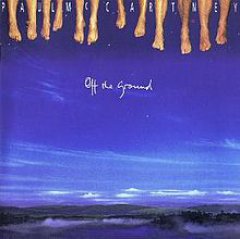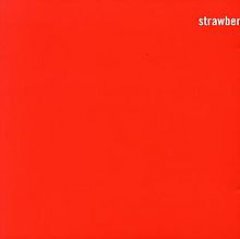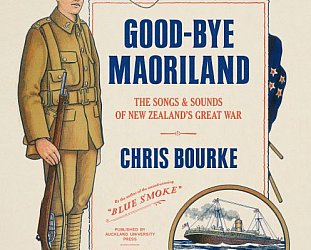Graham Reid | | 12 min read
Paul McCartney: Blue Jean Bop (from Run Devil Run)

As Paul McCartney closed his Eighties on a real high -- a massively successful world tour which won critical accolades and pulled in huge gate-takings -- it would seem he was back in top, rocking form. Not bad for someone who was perilously close to 50.
By 1990 he had been two decades out of the Beatles and had behind him more than a dozen solo albums (or with Wings) to draw on in concert. That he now increasingly swerved into that Beatles back-catalogue could be interpreted in two ways: that he had become comfortable with his own history; or that he knew what people really wanted when they came to see a former Beatle.
Or maybe neither: simply that he wrote those songs so why should he not sing them?
His triple album Trippin' the Live Fantastic, recorded during the '89 world tour and released in 1990, is a fair reflection of his artistry, songwriting skills (solo or in those other bands) and also his business sense. It has been considered as part of his Eighties catalogue given the time of its recording.
And curiously, just as he has started and ended his first solo decade with the low-key McCartney and McCartney II albums, he opened this decade (after the Trippin' set) with another modest outing.
 Unplugged; The Offical Bootleg (1991)
Unplugged; The Offical Bootleg (1991)
In a cover which echoed that of his Russian album Choba b Cccp three years previous, and which also found McCartney going through his back pages for old originals or songs which influenced him, these tracks taken from the Unplugged television series show him in fine vocal form and sometimes tellingly fragile (Here There and Everywhere, one of his finest songs).
McCartney took the "unplugged" prescription seriously and with his small band kept it acoustic and intimate.
But it is the song selection which recommends this: I Lost My Little Girl was the first song he wrote (at 14, he mentions that in the revamped lyrics), a country version of Blue Moon of Kentucky which they rock up towards the end Elvis-style, San Francisco Bay Blues, Bill Withers' Ain't No Sunshine and the old Singing the Blues.
Between these he offers some rarely played Beatles songs (We Can Work It Out, I've Just Seen a Face, She's A Woman, And I Love Her and Blackbird which are all welcome selections) and of course those from his own catalogue: Every Night, That Would Be Something and Junk (an instrumental version as the closer) all of which came from that equally low-key acoustic debut McCartney.
On release the album was enthusiastically embraced by the British and American public (perhaps as a result of the television profile) and gave McCartney a top 10 album in the UK and top 20 in the States. Unfortunately it was released only as a limited edition, but was re-released in the late Nineties.
One of his most relaxed, and therefore best albums.
Free stream here.
 Paul McCartney’s Liverpool Oratorio (1992)
Paul McCartney’s Liverpool Oratorio (1992)
Of this album we might guess that some in his pop-rock audience might have said, "Well, I don't understand classical music but I guess it sound okay to me -- even though I'd never listen to it". And the classical critics said something along the lines of, "Stick to what you know, son. And it isn't this kind of thing".
As we now know McCartney (always the orchestrated Beatle we must remind ourselves) persisted in the idiom, and due consideration will be given that when they pop up.
Meantime at Elsewhere there is this thorough consideration/interview of this ambitious choral and orchestral work at McCartney Goes Classical.
 Off the Ground (1993)
Off the Ground (1993)
Perhaps the long-term commercial failure of last studio album Flowers in the Dirt in '89 (peaked high, disappeared quick, critical acclaim but didn't lead to a great public reconsideration) led to the musical retreat on this album -- and on the accompanying tour he played a Beatles-heavy set as well.
Yet when listened to now it stands up remarkably well, depite the occasional but by now familar, sentimentality.
The band sounded tighter but more relaxed, the lyrics reflected McCartney's social concerns (the lyrically blunt Looking for Changes about animal welfare, Peace in the Neighbourhood which addressed the difference between the dream life and reality through the prism of post-optimism aging) and even the love songs -- to Linda presumably -- had some honest, universality (I Owe It All To You).
McCartney, as always, longed for better days . . . in the past or future.
Two left-over co-writes with Costello appear (but not Costello himself) on the slightly gloomy Mistress and Maid, and The Lovers That Never Were. And McCartney sounds in great voice everywhere.
As always in the overlong CD format there are a couple of tracks that could happily have been lost (notably Biker Like An Icon which has proven ridiculously popular), but in any countback this is one of his better albums. And Hope of Deliverance was a fine enough radio single although it, like the album, failed to ignite interest in his contemporary career.
No matter, he took to the road (there is an Elsewhere consideration of his Sydney concert played within weeks of this album's release) where he kicked bottoms again.
As the later Paul is Live album proved.
Judicious listening to this is recommended.
 Strawberries Oceans Ships Forest (1993)
Strawberries Oceans Ships Forest (1993)
And now things get very interesting. Credited only to The Fireman, this experimental ambient outing (my double album on clear vinyl) was in fact producer/remixer Youth (from Killing Joke/The Orb) and McCartney who reworked, remixed and sampled some studio sessions from the Off the Ground album (with a little off Back to the Egg added to the mix). And then McCartney wrote and performed some new bits'n'pieces to be added in. (According to Youth, McCartney used a gold bass guitar which had once belonged to Elvis).
The result is an album of dance music for those who prefer sitting down, long and trance-like instrumentals (with the clearly identifiable McCartney voice in discreet places) and an enjoyable experimental quality. It is however more slight than some might have you believe (comparisons with John Lydon's shift to electronic dance-rock aren't relevant) but it does have its moments.
Essentially a series of versions (remixes of basic tracks with other elements added), all of which clock in around eight or nine minutes. The Transpiritual Stomp and Trans Lunar Rising tracks owe a little to early Krautrock, and the vaguely tribal noises interjected remind you that way way back McCartney offered the experimental instrumental Loup: 1st Indian on the Moon on the Red Rose Speedway album.
Perhaps not the most interesting album in the genre, but it illustated that outside of his pop-rock manoeuvres he was still musically curious -- and prepared to put such a project out without fanfare.
Even better would come from this source.
Free stream here.
 Paul is Live (1993)
Paul is Live (1993)
As the live album count started to climb (this his third in as many years, these songs from the tour earlier in the year), this just-in-time-for-Christmas release seemed a little surplus to requirements.
Naturally it favoured his recent Off the Ground (Looking for Changes, Hope of Deliverance, Peace in the Neighbourhood, Biker Like An Icon, C'mon People) and that was actually a good thing: he had often toured on the back of an album and largely deferred to earlier solo hits and increasingly his Beatles work.
That is here too: 10 of the 24 songs are Beatles-era.
As with most live albums, it was a document for fans rather than offering anything new but although most of the songs were recorded in the States the album tanked in America. Number one in Argentina though.
Free stream here.
 Paul McCartney's A Leaf (1995)
Paul McCartney's A Leaf (1995)
By putting his name in the titles, Macca is not particularly subtle when it comes to his classical output -- or maybe he just figures he needs the brand recognition to gain attention in that rather more rarified world. His previous classical outing was, to give it the full title Paul McCartney’s Liverpool Oratorio and given the full title of this 10 minute piano piece (that’s Hey Jude plus And I Love Her approximately) you might expect any symphony he writes to be called . . .
This short piece played by Anya Alexeyev was written for some royal occasion (not that he needed to genuflect much, the knighthood was on its way) but it is hard to get excited about as a whole: there are some impressive, if derivative, passages and Alexeyev might not have been the best performer for the lively allegro ritmico (toss it to a jazz player, Paul) but she essays the various threads with understatement.
That said, there’s not much going on here although the thumbs are slightly aloft. As it turned out this was just throat-clearing for Paul McCartney's Working Classical of four years later in which it appeared in a different version.
The classical stuff wasn't out of his system.
But before then it was back to the day job.
Free stream here.
 Flaming Pie (1997)
Flaming Pie (1997)
Just as George Harrison eventually got past his irritation at the shadow of the Beatles hanging over him, so McCartney had become increasingly comfortable with his famous past, and in fact was never beyond exploiting it for publicity purposes when promoting a new solo album. (The reunion? "You never know", sort of thing.)
In concert he’d increasingly pulled out Beatles songs, for Paul is Live he was photographed on the crossing outside Abbey Road (rather wittily referencing the "Paul is dead" rumour in the cover and clues on the artwork), and here he lifted John Lennon’s fanciful story about how the Beatles got their name for the album title.
Now Sir Paul McCartney (he typically took the chance to plug the forthcoming album), and coming off the back of the Anthology doco project, he seemed much more relaxed.
"Watching the Anthology also reminded me of the time that we didn't take to make an album and the fun we had when we did one. The Beatles were not a serious group . . . so I wanted to try and get back to some of that, to have some fun and not sweat it."
With Beatles-fan (and Traveling Wilbury) Jeff Lynne on board as co-producer and sideman (McCartney's son James plays guitar on track, Ringo reappears although McCartney mostly played the drums himself, George Martin orchestrated a couple of tracks) this was hailed by US Today as "his most Beatlesque album in 30 years".
Sort of true also, it was his most consistently interesting album since Flowers in the Dirt of eight years previous and sales were obviously given a push after the Anthology television series.
In quick succession there were also new documentaries (Paul McCartney in the World Tonight for VH1, the Q&A Paul McCartney's Town Hall Meeting in Europe) and he appeared on the cover of Mojo in an exclusive interview.
Some excellent songwriting on this album which, although hailed at the time, seems somewhat overlooked in retrospect. In the gentle opener he recalls those heady dope-smoking days of the Sixties with typical sentiment (but understated); there is guitar jangle and a light psychedelic shudder which could have come from Rubber Soul on The World Tonight; slightly drone rock on If You Wanna and Macca-pop on Young Boy (both with guitarist and old friend Steve Miller); his sure touch for an easy melody on Heaven on a Sunday; some light Texas blues on Used To Be Bad . . .
Now 55, he was still managing to cut in a field he helped create. But he also looked elsewhere so . . .
 Paul McCartney's Standing Stone (1997)
Paul McCartney's Standing Stone (1997)
This symphonic poem in four movements -- played by the London Symphony, and with a choral group -- would be McCartney's most ambitious, and successful, work in the classical field.
As always there would be questions about just how much he "composed" given he couldn't really write music -- the creative process of piano sketches to electronic keyboard to transcriptions and arrangements is outlined in the accompanying booklet -- but McCartney here reaches to a huge and sometimes brooding tone poem about the nature of early Celtic Man and his interpretation of the universe and his known world.
He offers a liner note poem by way of further explanation (he's no poet) but the grand music and heroic flourishes (very much like a soundtrack rather than a symphony with its repeated phrases and evocations) is quite engrossing. With unusual percussion and dramatic flourishes, it reminds you that the young John Tavener was on Apple and that McCartney was, by now, well versed in many areas of composition so entirely comfortable with string sections, percussion and so on.
Yes, there are slightly twee and cliched passages, but over the long haul this is quite an achievement for a musican who is self-taught.
Indeed quite an achievement for anyone, and not the vanity project that Liverpool Oratorio seemed.
 Rushes (1998)
Rushes (1998)
Another Fireman project, but quite different from its predecessor . . . and the better for it. Again it came with no fanfare (neither McCartney nor Youth credited on the cover).
This time out there was a substantially more trippy element to it from the ambient instrumental opener of acoustic guitars over seriously wooshing electronica (very Tangerine Dream/early Seventies actually) which panned from speaker to speaker.
In places you can hear what might be Linda McCartney's voice echoed and distant, what sounds like "we love you" from down a corridor, there's Indo-drone and sitar sounds on the slightly unsettling Auraveda, there are long and loping grooves . . .
Nothing much happens, but very nicely indeed thank you.
Some of the eight pieces segue into one another, and you can imagine that McCartney, a heroic toker, would be sitting in the conversation pit with this in surround sound.
Unfortunately you can't do the same unless you were quick at the time: as with the first Fireman album this has been deleted on vinyl.
Worth finding if the idea of sffffftt . . . ahhhhhh is in any way appealing.
Ffffortunately there's a ffffree stream here.
 Run Devil Run (1999)
Run Devil Run (1999)
Recorded in rapid fire sessions at Abbey Road, this was McCartney unleashing his rock'n'roll past once more as he had on Choba b Cccp -- but this time he really fires, as does the band which includes Pink Floyd's David Gilmour on guitar and Deep Purple drummer Ian Piace.
The material was mostly flat-tack rock'n'roll music -- She Said Yeah, All Shook Up, Brown Eyed Handsome Man, I Got Stung, as well as his own title track and What It Is in the genre -- but he also kicked in with some creditable Chet Atkins/Carl Perkins country (Movie Magg) and rock'n'roll ballads. He went right back to the Twenties for his update of Coquette as a bar room pleaser.
The theory was that after the death of his wife Linda the previous year he was past the mourning and wanted to blast out the accumulated cobwebs. It certainly sounds it: this was McCartney as incendiary rocker like he hadn't been since maybe as far back as Hamburg and the Cavern, or at least I'm Down and Long Tall Sally. He sounds positively possessed by rebel rock'n'roll of the Fifties and conjures up the spirit of Gene Vincent, Chuck Berry, echo-heavy Elvis and others whose material he undertakes.
An essential McCartney album.
Free stream here.
He turned 57 the month after the sessions -- and at year's end delivered something . . . more befitting a man of his age?
 Paul McCartney's Working Classical (1999)
Paul McCartney's Working Classical (1999)
To be honest, I haven't heard this one and frankly I was about done with Macca in classical mode. It seemed an odd one after the quite exceptional Run Devil Run. It came out just a month later.
For your information however it was classical settings (ie orchestrated, played by the LSO) of some of McCartney's hits and decent album tracks (Junk gets another reworking alongside Maybe I'm Amazed and the Lovely Linda, all from that solo debut that he constantly returned to) as well as some new originals and another version of A Leaf (see above).
It fared reasonably well in critical circles although doubtless went unheard by people like me who felt Run Devil Run was McCartney doing what he did best, but all too infrequently.
 So, the Nineties were a diverse, and for him very rewarding, decade for McCartney on record.
So, the Nineties were a diverse, and for him very rewarding, decade for McCartney on record.
From acoustic sessions and classical work, playing stadiums and The Firemen studio projects, to the long overdue proof that behind the tunesmith and professional songwriter was a man who still understood rock'n'roll . . . and still knew how to play it.
Could there be yet another area of music he might want to explore in the new millennium?
Unsurprisingly, yes . . .
See Paul McCartney Solo Career Part 4.
For part one of this series go here, for part two go here.







post a comment